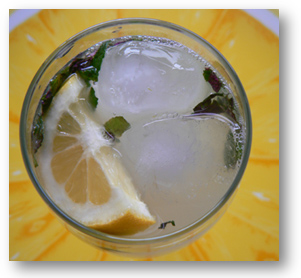Juicing and Smoothies for your Health – Recipes included!
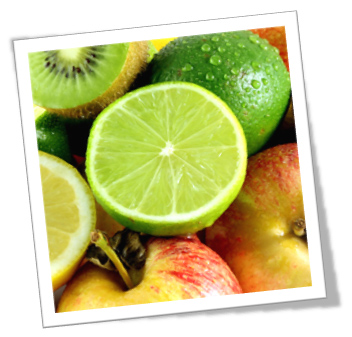 Are you looking for a convenient way to eat healthier? Do you want to accomplish better health and nutrition but you don’t want to give up the flavor and joy of food? Or maybe you want to eat healthier but just don’t have the time to cook or prepare meals. If any of this sounds familiar then this post is for you.
Are you looking for a convenient way to eat healthier? Do you want to accomplish better health and nutrition but you don’t want to give up the flavor and joy of food? Or maybe you want to eat healthier but just don’t have the time to cook or prepare meals. If any of this sounds familiar then this post is for you.
The secret missing ingredient or missing food is easy. It’s super healthy, and you can lose weight, have more energy, sleep better and enjoy improved vitality. What is this powerhouse ingredient? It is two types of food actually, juices and smoothies.
What’s the Difference?
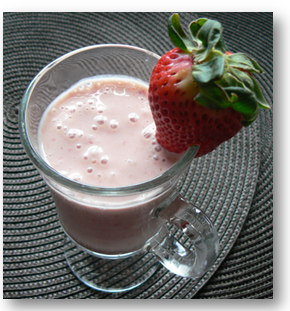
Juicing is the process of extracting the juice or liquid from fruits and vegetables. The peel and the pulp are left behind. There are many different types of extractors or juicers and you can certainly juice many foods, like oranges, by hand. Fresh juice is flavorful and nutritious.
Smoothies (pictured at left) are made in a blender. All of the pulp and fiber is contained in your beverage. Smoothies are generally prepared with a base. You might use water, milk or even yogurt. We’ll take a deeper look at the bases for smoothies and a few recipes in just a bit.
For now, know that while both smoothies and juicing is healthy and beneficial, if you’re seeking more fiber in your diet, smoothies are the better choice – provided that you don’t pack your smoothie with sugar and other unhealthy additives.
Speaking of fiber and boosting your health, let’s take a look at how smoothies and juicing can improve your life.
Why Add Juices and Smoothies Into Your Diet?
Okay, you’ve heard a lot about smoothies and juicing but maybe you’ve been wondering what all the fuss is about. Let’s start by saying that both juicing and smoothies are a fantastic, and delicious, way to improve your health. But let’s talk specifics, right? You probably want to know WHY they’re good for your health.
- RDA of Fruits and Vegetables – Do you eat enough fruits and vegetables? If you’re like most folks then the answer is no. Even if you have good intentions and eat a fruit or veggie at every meal you may still be behind on your recommended daily allowance.
Juicing and smoothies both help you get your RDA in every single day. Think about it, if you have one breakfast smoothie you may easily consume four to five servings of fruits and vegetables in one beverage. Consume two smoothies in a day and you can count that day a vegetable success.
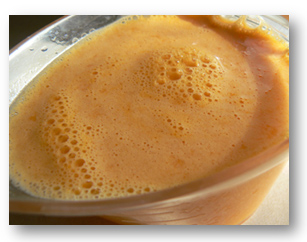 More Energy – When you drink a smoothie or a glass of freshly made juice, you get an instant dose of energy. The digestive process is hastened; you digest smoothies quickly, and receive the nutrition and benefits almost instantly.
More Energy – When you drink a smoothie or a glass of freshly made juice, you get an instant dose of energy. The digestive process is hastened; you digest smoothies quickly, and receive the nutrition and benefits almost instantly.
And if you add protein to your smoothies or juice then your energy will last several hours because the protein helps control the release of sugars into your blood stream.
- Better Health and a Stronger Immune System – Studies have shown that people with a diet high in vegetables and fruits have a lower risk of heart disease, diabetes, and cancer. The antioxidants and vitamins help protect you from common viruses and infections too.
- More Fiber – Smoothies provide the fiber you need to reduce bloat, lose weight, and improve your digestive system.
- Detoxification – Juicing can help flush your body of the natural toxins you’re exposed to every day. You’re exposed to toxins in the air you breathe, in the things you touch and even in the foods you eat.
Pesticides, herbicides, and chemical additives in some foods can cause problems when they build up in your body. Juicing can help you get rid of those toxins and enjoy better health and vitality.
- Weight Loss – Are you looking to lose a little, or a lot, of weight? Juicing and smoothies are a wonderful way to enjoy delicious nutrition and energy without the calories. Think about it, a satisfying smoothie is a much better lunch than a fast food burger, right?
- Other Benefits – Finally, many people who add juicing and/or smoothies to their daily nutrition find that they also enjoy better skin, better hair, improved sleep and even an improved sex life. There really isn’t a downside to drinking a delicious glass of fruits and vegetables each and every day.
Are you ready to take that first step? Let’s take a look at how you can start adding smoothies and juicing into your daily diet.
How to Add Smoothies and Juicing Into Your Daily Life
One of the biggest challenges to daily nutrition is the planning and preparation aspect. Very few people have time to prepare three full scale meals complete with two to three vegetables for each meal.
Smoothies are actually easy to make and with a little help they’re easy to plan for and take with you on the go.
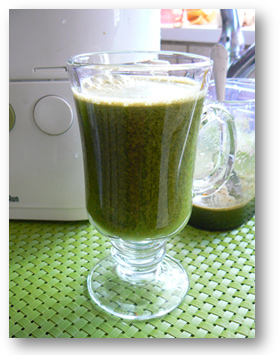 Breakfast – Do you eat a healthy breakfast every day? Not everyone does. However, you can whip up a smoothie in the morning pour it into a travel cup and drink it on the go.
Breakfast – Do you eat a healthy breakfast every day? Not everyone does. However, you can whip up a smoothie in the morning pour it into a travel cup and drink it on the go.
One smoothie with a little protein can keep you satisfied and full until lunchtime. And you can be confident you’re getting the nutrients and vitamins your body needs.
For example, a smoothie made with your milk of choice, a handful of greens, a banana or an apple, and a little protein powder or chia and you have a perfect meal in a glass. Best of all, it took less than five minutes to prepare.
- Snacks – One of the biggest hurdles many people have when they’re trying to lose weight is the mid-day snack. A prepared smoothie can solve all of your problems.
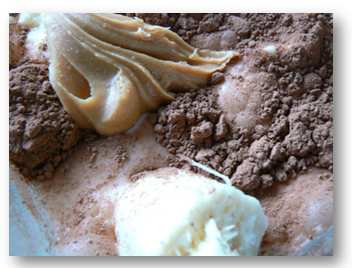
You can even prepare your smoothie the night before and pop it in the freezer. It’ll thaw throughout the morning and be cold and tasty when you’re ready for your mid-morning or mid afternoon snack.
For example, a smoothie made from coconut milk, a very ripe banana, protein powder, a tablespoon or two of cacao powder and a bit of nut butter makes a sweet and satisfying mid-day snack. You won’t miss the vending machine or the drive-through at all.
- Pre/Post Workout – One of the downsides to working out is that you’re often hungry, very hungry, when you’re done. The result can be a binge at the drive-through or when you get home. Having a protein smoothie or a juice ready to go will help you avoid consuming more calories than you want or need.
- After Dinner Snack – Many weight loss experts and nutritionists advise against eating before you go to bed. But let’s face it, sometimes you’re just too hungry and sometimes it’s nice to have a little something while you’re watching television or relaxing late in the evening.
A fresh juice or smoothie can be a healthy way to soothe the craving and if you use green leafy vegetables, you’ll reduce the sugar content in your snack. And if you add a little extra nutrient, like flaxseed, then you’re giving your body a nice health boost.
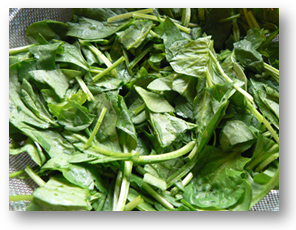 Adding smoothies and juicing to your diet is simple. It’s so easy in fact that you might find yourself drinking several a day. Consider starting with just one or two each day to give your body time to adjust to the increased fiber intake. You just need a few tools to get started.
Adding smoothies and juicing to your diet is simple. It’s so easy in fact that you might find yourself drinking several a day. Consider starting with just one or two each day to give your body time to adjust to the increased fiber intake. You just need a few tools to get started.
Tools You Need to Get Started Juicing and Enjoying Smoothies
You may already have everything you need to begin your new smoothie lifestyle. All you really need is a blender. If you’re juicing then you may want to consider adding a juicing machine to your kitchen appliances. You can juice some vegetables and fruits by hand.
However it’s difficult to get some of the juice out of the more dense vegetables. Imagine trying to juice a carrot or spinach by hand.
- Blender – If you don’t already own a blender, look for one that has an option to blend frozen food. Frozen berries and even frozen spinach cubes can be an easy way to store fresh produce.
However, if your blender cannot handle blending frozen fruits and vegetables then the smoothie making process can be a hassle. Some manufacturers have “smoothie” makers that you can buy; however, you don’t need to if you already own a good blender.

Search for blenders on Amazon here. Be sure to check out the reviews to get the best machine possible for your needs.
- Juicer – Juicers come in a variety of styles and are suitable for a variety of budgets. When comparing juicers look for models that have a reputation for durability. Chances are you’ll be using your juicer often and you want your investment to last.
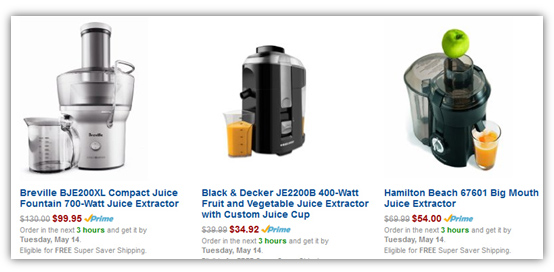
Search for and compare juicers right here.
Additionally, while no juicer is easy to clean up, look for models that make the process as simple as possible. If you can toss some of the parts in the dishwasher, that’s even better.
- Sharp Knife – Slicing a pineapple or a head of cauliflower in half takes some muscle but more importantly, it requires a good knife. You’ll need to chop your veggies and fruits into pieces that are small enough to fit in your juicer or blender.
- Colander – Wash your fruits and vegetables before you prepare your juice or smoothie. Colanders make the task simple.
- Peeler – While you can toss fruits and vegetables into your juicer with the peels on, you cannot do this with a blender. And in many cases you may not want to juice with the peel on. It takes longer and can clog up the juicer. Invest in a good vegetable peeler.
- Travel Cups – One of the best ways to enjoy a smoothie is on the go. Look for travel cups that can store a large volume. Ideally, you can also freeze your travel cup and toss it into the dishwasher for easy cleaning.
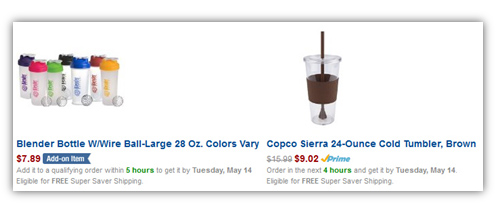
If you prefer to drink from a straw then look for a travel cup with a built in straw. Nalgene and Camelback brands both manufacture larger travel containers that are perfect for smoothies and juice. You can also buy an insulated cover to keep your beverages cold.
- Recipes – Finally, consider grabbing a few recipes to begin with. Keep a notebook handy as well. Some of the best smoothie recipes come from experimentation. You may find that adding an herb to your breakfast smoothie recipe kicks it up a notch.
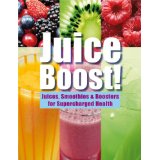 You might consider picking up Juice Boost by Chris Fung. It’s written by the Managing Director of the popular U.K. juice bar chain Crussh. The book provides a great overview of juicing and smoothie making and has tons of delicious recipes…some even combining both techniques of drink making.
You might consider picking up Juice Boost by Chris Fung. It’s written by the Managing Director of the popular U.K. juice bar chain Crussh. The book provides a great overview of juicing and smoothie making and has tons of delicious recipes…some even combining both techniques of drink making.
In addition, having a notebook at the ready means you won’t forget your recipe and can enjoy it again.
Once you have your supplies, it’s time to head to the supermarket to begin looking for the ideal smoothie ingredients. In the next section we take a look at everything from apples to protein powder and everything in between.
Your Supermarket Smoothie Shopping List
The foundation for any smoothie is generally a healthy amount of fruits and vegetables. However, for smoothies you’ll also likely want some sort of base and you may want to add protein powder too depending on your goals and dietary requirements.
Let’s begin by taking a look at the base for many smoothie recipes, milk.
What Type of Milk Do You Want to Add?
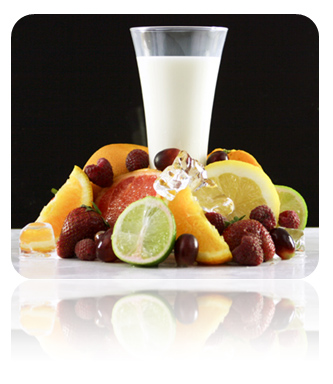 If you’re making a smoothie you can certainly add water and blend. Smoothies need a little more liquid added because you’re not separating the pulp. If you don’t add some type of liquid you’ll have an incredibly thick smoothie – you’ll need a spoon instead of a straw.
If you’re making a smoothie you can certainly add water and blend. Smoothies need a little more liquid added because you’re not separating the pulp. If you don’t add some type of liquid you’ll have an incredibly thick smoothie – you’ll need a spoon instead of a straw.
Most people prefer to add milk to their smoothie instead of water. However, there are many choices beyond cow’s milk.
- Soy Milk – Soy milk is made from grinding dried soybeans with water. It has about the same amount of protein as cow’s milk. It generally has some added sugar but unsweetened soymilk will not have more sugar than cow’s milk which contains lactose.
It’s a good option if you’re allergic or sensitive to cow’s milk proteins or to lactose. Soy is a crop that is often genetically modified so if you’re wary of GMO foods, buy organic soymilk.
- Rice Milk – Rice milk is made from brown rice and can be purchased without any added sugars. It is low in protein, however. So if you’re seeking a low glycemic diet or want to maintain some level of protein in your smoothies you may want to add protein powder to your beverage.
- Coconut Milk – Coconut milk is quite popular right now. It’s rich, creamy, and naturally sweet. It also has some health benefits including the ability to raise HDL, the good cholesterol that your body needs. It also has a significant amount of Medium Chain Fatty acids which have been shown to facilitate weight loss.
- Nut Milks – There are also many types of milk found in your supermarket that are made from nuts and seeds. Almond milk and hemp seed milk are two examples. These milks often have added sugars but can be a good alternative to cow’s milk and soy milk if you have food sensitivities.
- Yogurt – Finally, you don’t have to use milk as the foundation for your smoothie. You can use yogurt. It’s a good choice if you want make thicker smoothie or you want some additional protein. Greek yogurt is higher in protein than traditional yogurt. And just like milk, you can find yogurt made from soy, coconut and other alternatives.
- Juice – If milk of any type isn’t to your liking, you may want to thin your smoothies with a bit of juice. Apple juice is often paired with smoothies because it’s sweet. You’ll want to find the right juice for each smoothie recipe you create.
Vegetables Galore
Juicing fruits only isn’t a great idea. Sure it tastes great but you’re missing out on the nutrients found in vegetables. Fruits are sweet and are excellent to add a touch of flavor to your juice or smoothie.
However, ideally you’ll have more vegetables than fruits in your concoctions. Let’s start by looking at the most powerful veggies and ones that should be consumed every day.
Dark Leafy Greens
Dark leafy greens are rich in vitamins and minerals. They’re also generally sweet and can be combined with fruit to create a delicious, albeit odd looking, smoothie or juice.
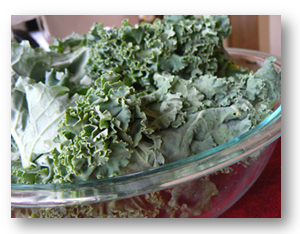 Kale – Kale is the king of dark leafy greens. It’s also quite popular in the supermarket. There are different types of kale but they’re all extraordinarily nutritious.
Kale – Kale is the king of dark leafy greens. It’s also quite popular in the supermarket. There are different types of kale but they’re all extraordinarily nutritious.
Kale is rich in calcium which makes it excellent for people who cannot consume dairy products. Additionally, it tastes quite nice with apples, bananas, and berries.
- Spinach – Popeye loved spinach and there’s a reason why. In addition to a bit of calcium it also contains an abundance of vitamin K. It’s packed with many other important vitamins and minerals including A, B, and E and it has the minerals your body needs. Like kale, spinach pairs nicely with many fruits.
- Dandelion Greens – Dandelion greens can be a little bitter and you’ll want to add some sweetness to a smoothie with this ingredient. It is an excellent detoxifier however. If you want to detox, it’s particularly useful for ridding the kidney, liver and pancreas from toxins.
Many health experts often recommend dandelion tea as part of a detox diet. You don’t have to drink the tea, simply juice or blend the greens into a smoothie. It’s also a mild diuretic and has been shown to clear up acne. It’s rich in many minerals including calcium and iron.
- Wheatgrass – Wheat grass is considered one of the healthiest things you can put into your body. In fact, many health experts recommend getting a daily shot of wheat grass. You can grow or buy it in grass form or you can buy it bottled and simply add a shot of it to your juice or smoothie.
Wheatgrass helps neutralize free radicals, those pesky elements that cause cancer and damage cells. It contains enzymes which stimulate healthy digestion. It also contains vitamin A, chlorophyll, potassium, and magnesium.
- Parsley – Parsley isn’t exactly a green. It’s an herb, like cilantro or basil. However it is healthy enough to have its own category here. It contains chlorophyll and is a detoxifier. And if you add garlic or onions to your smoothie it can help your breath. It has a mild flavor so you can add it to just about any juice.
This list is by no means exhaustive. You can add turnip greens, herbs, and collard greens too. Beet greens are fun to add if you enjoy beets. Experiment with greens. You might be surprised how much you like some greens in juice and smoothie form.
Now let’s take a look at some of the many vegetables you can juice or blend into a smoothie. You can start building and creating your own unique recipes.
Vegetables to Juice and Blend
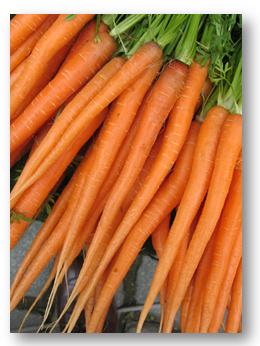 There are dozens of different vegetables to add to your juice and smoothie lifestyle. And because produce is seasonal, you can focus on buying the fruits and vegetables that are in season and save money. You’ll also get the freshest produce when you buy what’s in season. Let’s begin with everyone’s favorite vegetable.
There are dozens of different vegetables to add to your juice and smoothie lifestyle. And because produce is seasonal, you can focus on buying the fruits and vegetables that are in season and save money. You’ll also get the freshest produce when you buy what’s in season. Let’s begin with everyone’s favorite vegetable.
- Carrot – Who doesn’t love carrots? They’re sweet, they’re crunchy, and they are packed with vitamins and minerals including vitamin C. When juicing, you don’t have to peel them, you can just pop them into the juicer and enjoy.
- Beets – Beets add a glorious color to your smoothies and juices and they’re rich in iron as well as many other beneficial minerals.
- Peppers – Green, red, orange, and yellow, sweet peppers are rich in vitamin c and have lots of antioxidants. And if you want to add a kick to your tomato juice you can always toss part of a hot pepper into your juicer or blender.
- Tomatoes – Tomatoes aren’t a veggie that you can use casually in juices or smoothies. They don’t blend well with a multitude of flavors. However, if you enjoy a Bloody Mary type cocktail then you can enjoy a non-alcoholic smoothie or juice version of it. Tomatoes are loaded with lycopene and myriad other nutrients. They also juice quiet easily.
- Cabbage – Cabbage is one of the many cruciferous vegetables that are excellent for fighting cancer, detoxifying your body, and improving digestion. Other cruciferous vegetables include broccoli, Brussels sprouts, and cauliflower. They’re all excellent for regulating blood sugar as well.
- Celery – Celery is an excellent vegetable to juice and blend. It has diuretic properties and is a detoxifier. It also contains potassium and has been used to lower blood pressure. Celery stalks, including the greens, can be washed and popped into the blender or juicer whole. No trimming or peeling required.
- Sweet Potatoes – Okay, so sweet potatoes aren’t what you normally think about when you think about juicing and smoothies. However, you can juice them. They’re packed with beta carotene (it is what gives them the orange color). They also have iron, vitamin b and vitamin c. You can also enjoy turnips and yams in your juice or smoothies.
Fruits and Berries Add a Little Sweetness
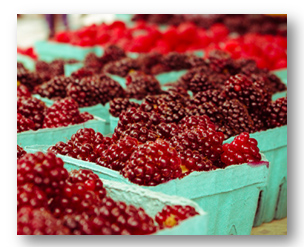 While many vegetables are quite sweet, fruit can take your smoothie to the next level. And if you’re trying to break a sugar habit, a little fruit can help you make the transition to a low sugar diet. Here are just a few of the flavor packed fruits to consider adding to your shopping list.
While many vegetables are quite sweet, fruit can take your smoothie to the next level. And if you’re trying to break a sugar habit, a little fruit can help you make the transition to a low sugar diet. Here are just a few of the flavor packed fruits to consider adding to your shopping list.
- Berries – Whether you’re talking about strawberries, blueberries, raspberries or other types of berries, they’re all packed with antioxidants. These antioxidants help fight disease and boost your immune system. They’re easier to add to a smoothie than a juicer. However, they’re a welcome addition to either.
- Cranberries – Yes, cranberries are a type of berry. However, they are quite different than most berries. They help prevent bacteria from forming in your digestive tract, bladder, and kidneys. They’re excellent for digestion as well. They’re sour, unlike other types of berries, and may need to be sweetened with other berries, grapes, or apples.
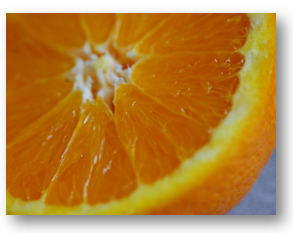 Citrus – Mmmm, what’s better than a glass of fresh squeezed orange juice? Oranges, grapefruits, and other types of citrus are full of vitamin C. They also contain carotenoids and bioflavonoids as well as antioxidants.
Citrus – Mmmm, what’s better than a glass of fresh squeezed orange juice? Oranges, grapefruits, and other types of citrus are full of vitamin C. They also contain carotenoids and bioflavonoids as well as antioxidants.
These fruits are easier to juice than to add to a smoothie because the outer skin, once you peel them, can be bitter. A juicer will leave this bitter material behind, a blender won’t.
- Melons – Melons are natural diuretics and detoxifiers. They also have high water content and make juicing easy. Melons also blend well with a number of other flavors.
- Pineapple – Pineapple is rich in vitamin c and b. It’s also quite sweet and a little can go a long way. It often works better in your juicer because the fiber can be difficult to blend.
- Mango – Mango is a fruit that you’ll have to pit and peel but it’s worth the effort. It’s rich in B vitamins which are great for skin, hair, nails and for helping your body manage stress.
- Apples – You’ll find that many smoothie and juice recipes contain apples as one of their ingredients. Apples are sweet. They have fairly high water content, and they’re good for you. They’re packed with antioxidants and blend well with a wide number of other fruits and vegetables.
- Bananas – Like apples, bananas are high in B vitamins. They’re also high in potassium and can give a smoothie a creamy texture. Ripe bananas are extremely sweet and pair well with chocolate, nuts and nut butters along with other tropical fruits.
- Papaya – Papaya has a distinct flavor. Many people either love it or hate it. It’s rich in papain, an enzyme that helps breakdown protein. Papaya seeds can also be eaten. They have a taste that’s often described as peppery.
This list of fruits and vegetables is by no means exhaustive. There are many other fruits and veggies that you can try. Before we wrap up with a few recipes and tips for success, let’s talk about the add-ons you might want to consider.
Extras and Add-Ons
Many people enjoy smoothies as part of a post workout meal, meal replacement, or as a healthy breakfast. If you plan to use smoothies this way you may want to consider some add-ons including protein powder.
- Protein Powder – Protein powders turn smoothies and juices into a meal. They help your blood sugar maintain a healthy balance and protein helps you feel more satisfied and full. There are different protein powders to consider. They include but aren’t limited to:
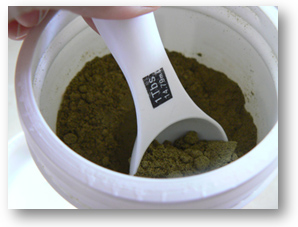 Egg – Made from egg whites
Egg – Made from egg whites- Whey – Made from cow’s milk. (Whey is one of two proteins found in dairy. The other is Casein.)
- Soy – Soy is a common protein powder. Look for organic soy if you’re avoiding GMO’s.
- Hemp – Made from the hemp seed. Has a slightly nutty taste.
- Ginger – Ginger is used to aid digestion and detoxify. It’s also a great flavor to add to many juices. Just peel and pop a bit into your juicer.
- Nut butters – Nut butters like almond butter, peanut butter, or even hazelnut butter, add a creamy texture to your smoothies. They also add a bit of protein.
- Cacao powder – If you like chocolate then cacao powder can be an excellent way to get a fix during your day. It’s tasty with bananas too.
- Honey, Agave, and Maple Syrup – While adding sugar to your healthy juices and smoothies generally isn’t recommended sometimes you just want a little sweetness. Honey actually has some antibacterial properties and is perhaps the best option when adding a sweetener. Maple syrup and agave are also options.
Starter Recipes
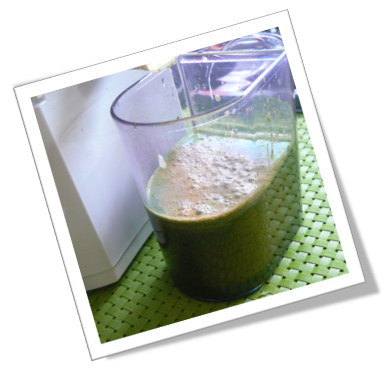 There are literally hundreds of juice and smoothie recipes to be found online and in books. Some of them are wonderful. As you begin to collect and follow recipes, be sure to experiment and track your changes. You may find that your favorite smoothie recipe is one that you created yourself.
There are literally hundreds of juice and smoothie recipes to be found online and in books. Some of them are wonderful. As you begin to collect and follow recipes, be sure to experiment and track your changes. You may find that your favorite smoothie recipe is one that you created yourself.
Green Juice
- 2 cups spinach
- 2 cups peeled cucumber
- 3 stalks of celery
- 1/2 inch peeled ginger root
- 1 handful of parsley
- 2 apples
Add to your juicer and enjoy
Papaya Orange Juice
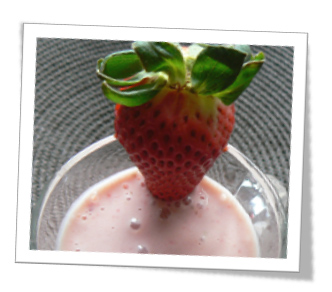 ½ papaya, peeled and seeded
½ papaya, peeled and seeded- 4 oranges, peeled
Add to your juicer and enjoy
Classic Strawberry Banana Smoothie
- 1 very ripe banana
- 1 cup strawberries (frozen overnight)
- 1 cup milk
Blend and enjoy
Chocolate Banana Smoothie
- 1 very ripe banana
- 1 cup milk (or ½ cup Greek yogurt & 1/3 cup milk)
- 1-2 tablespoons of cacao powder
- 1 scoop protein powder of your choice.
Blend and enjoy.
You can modify these to fit your tastes and needs. For example, you might want to add carrots to the green juice or swap kale for spinach and the chocolate banana smoothie is excellent with a tablespoon or two of nut butter. Have fun with it and experiment to find flavors that make you smile.
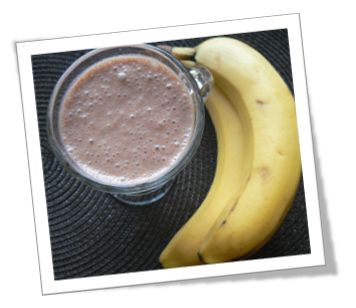
Tips for Success
Wrapping up, a few key tips will help you embrace this new lifestyle change quickly and easily. The first, and perhaps most important, is to stock up on the produce you need to make your smoothies. You can freeze most fruits or buy frozen. You can also blend your vegetables and pour them into ice cube trays. When you need to make a smoothie simply pop the cubes into your blender or thaw and drink the juice.
Also, many juices and smoothies are better when they’re cold. This is particularly true if you’re adding protein. If you’re not drinking the smoothie or juice right away, try to keep it cold.
Finally, variety is the spice of life and consuming a variety of fruits and vegetables is the healthiest approach. Take advantage of what’s in season and enjoy delicious juices and smoothies year round.
